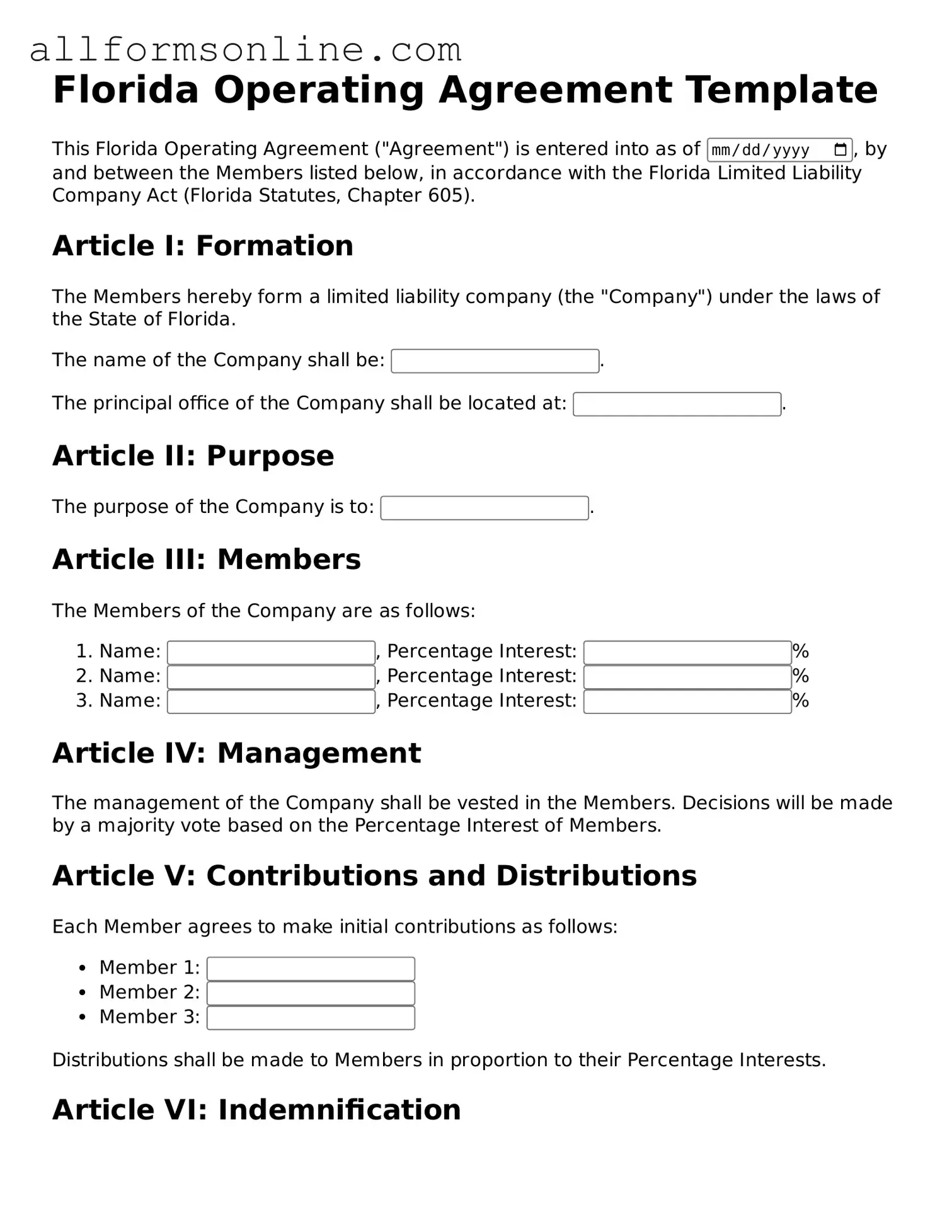What is a Florida Operating Agreement?
A Florida Operating Agreement is a legal document that outlines the management structure and operating procedures of a limited liability company (LLC) in Florida. It serves as an internal guideline for the members of the LLC, detailing how the company will be run, how profits and losses will be distributed, and how decisions will be made. This agreement is crucial for preventing misunderstandings among members and providing a clear framework for operations.
Is an Operating Agreement required in Florida?
No, Florida does not legally require LLCs to have an Operating Agreement. However, having one is highly recommended. Without an Operating Agreement, the LLC will be governed by Florida's default LLC laws, which may not align with the members' intentions. An Operating Agreement helps establish the rights and responsibilities of the members, offering protection and clarity.
Who should draft the Operating Agreement?
The members of the LLC can draft the Operating Agreement themselves, or they may choose to hire an attorney for assistance. While it is possible to find templates online, it is advisable to customize the agreement to fit the specific needs of the business and its members. This ensures that all relevant issues are addressed and that the document complies with state laws.
What should be included in the Operating Agreement?
Key elements of an Operating Agreement typically include the LLC's name and address, the purpose of the business, the names of the members, their ownership percentages, and how profits and losses will be shared. Additionally, the agreement should outline the management structure, decision-making processes, and procedures for adding or removing members. It may also address dispute resolution methods and the process for dissolving the LLC.
Can the Operating Agreement be amended?
Yes, the Operating Agreement can be amended. The process for making changes should be outlined in the agreement itself. Typically, amendments require the consent of a certain percentage of the members. It is important to document any changes in writing and to keep the updated version with the original Operating Agreement to ensure that all members are aware of the current terms.
What happens if there is no Operating Agreement?
If there is no Operating Agreement, the LLC will be governed by Florida's default laws. This may lead to unexpected outcomes in terms of profit distribution, management decisions, and member rights. Disputes among members may arise more easily without a clear framework. Having an Operating Agreement can help avoid these issues and provide a clear process for resolving conflicts.
How does an Operating Agreement protect the members?
An Operating Agreement protects the members by clearly defining their roles, responsibilities, and rights within the LLC. It helps establish the rules for how the business operates, which can prevent disputes and misunderstandings. Additionally, it can provide liability protection by reinforcing the separation between personal and business assets, which is a key benefit of forming an LLC.
